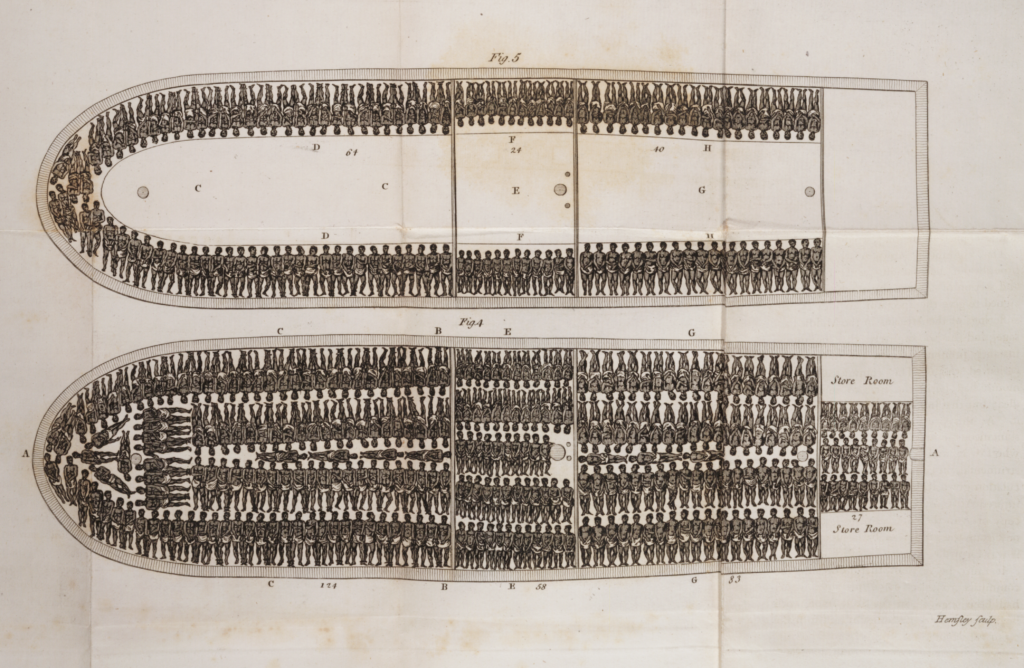23andMe has added finer detail for customers with roots that trace to 19 different Caribbean populations with significant African ancestry.
The update is part of our continuing work to improve 23andMe’s Ancestry Service reports and features. This new update allows customers with ancestry tracing to one of these Afro-Caribbean populations to see their genetic connections to these communities. The update also helps improve our understanding of the genetic legacy of slavery and the contribution enslaved people and their descendants have made to the rich history and culture of the Caribbean.

Afro-Caribbean People
Many Caribbean Islands have significant populations or even majority populations of African ancestry or who identify as Afro-Caribbean.
Much like in the United States, understanding slavery and the contributions of African people is crucial in understanding the history and culture of the Caribbean. Initially, Spanish colonizers used enslaved indigenous people, the Taino, after Christopher Columbus landed in Hispaniola in 1492. But soon after that, enslaved Africans were brought to the islands. Spanish slavers brought the first enslaved Africans there as early as 1510. In 1562, the English slaver Sir John Hawkins brought enslaved people to Hispaniola — now Haiti and the Dominican Republic — according to a history of slavery in the Caribbean by researchers at the University of Glasgow.
The Caribbean islands — the bigger of which include Cuba, Jamaica, Puerto Rico, and Hispaniola (composed of Haiti and the Dominican Republic), as well as smaller island chains like the Bahamas, the Cayman Islands, the Leeward Antilles, and the Lesser Antilles — were one of the leading destinations for the transatlantic slave trade. Ultimately, about 40 percent of enslaved people taken from Africa, or roughly five million people, ended up on Caribbean islands.

The Birth of Afro-Caribbean Culture
After surviving the horrific middle passage in the holds of slaving ships, the enslaved people wound up on sugar plantations controlled by English, French, Dutch, or Spanish colonists. Many enslaved people did not survive and, once on the islands, died at alarming rates due to disease and grueling work on those plantations. Primarily, the work involved clearing land, planting sugar cane, harvesting it, and crushing it to extract cane juice. The enslaved people heated the cane juice in large vats in buildings called “boiling houses” to form the sugar.
Over time, people of African descent made up a large proportion of the population of many of these islands. In some cases, they made up the vast majority. African culture heavily influenced these islands’ history, language, culture, and cuisine.
The brutality of the slave system also triggered revolts. Escaped enslaved people and indigenous people in Jamaica, known as Maroons, revolted in 1730. This led to a treaty with the British that allowed them to establish semi-autonomous mountain communities. Other uprisings and revolts peppered the islands’ histories, including the Saint-Domingue revolution that began in 1791, which led to the formation of Haiti, the first free black nation and constitutional democracy. Haiti, or Hayti, originates from the original indigenous name, meaning “land of high mountains.”
Many excellent books on Afro-Caribbean history include The Caribbean: A Brief History, Empire’s Crossroads: A History of the Caribbean from Columbus to the Present Day, and Slavery in Africa and the Caribbean.
Ancestry Composition update
23andMe’s Ancestry Composition report is a living analysis that improves as we add new reference data. Underlying our Ancestry Service reports are powerful algorithms and analytical tools developed by 23andMe population geneticists and engineers to offer our customers more insights into their ancestral origins.
Over the last few years, we’ve updated results for people with African ancestry, Chinese ancestry, Indigenous Caribbean ancestry, Spanish and Portuguese ancestry, Indigenous North American ancestry, British and Irish ancestry, Indigenous Mexican ancestry, and Indigenous Central American ancestry.
While 23andMe customers may already see evidence of recent Afro-Caribbean ancestry, this update and the added Genetic Groups represent improved accuracy and detail. The Genetic Groups that are part of this update are also more reflective of the distinct regional populations that link to a customer’s ancestry.
For this update on Afro-Caribbean ancestry, our scientists relied on reference panels composed of research-consented customers with significant African ancestry who have four grandparents, each born in the same Caribbean country or territory.
Regions in the Caribbean covered in this update
23andMe’s new Afro-Caribbean Genetic Groups include 19 distinct islands or island chains with a shared genetic, linguistic, and cultural history.
Below is the list of 23andMe’s 19 Afro-Caribbean Genetic Groups:
· Afro-descendant Peoples of the “ABC Islands” are Aruba, Bonaire, and Curaçao, the three westernmost islands of the Leeward Antilles in the Caribbean Sea.
· Antiguan and Barbudan
· Bahamian
· Barbadian
· Afro-descendant Peoples of Bermuda and Turks & Caicos
· Afro-Cuban
· Dominican (Dominica)
· Afro-Dominican (Dominican Republic)
· Garifuna of Eastern Central America
· Afro-descendant Peoples of the Cayman Islands
· Afro-descendant Peoples of Grenada, St. Vincent, and the Grenadines
· Jamaican
· Montserratian
· Northern Haitian
· Haitian
· Afro-descendant Peoples of the Western Leeward Islands
· Afro-Puerto Rican
· St. Lucian
· Afro-Tobagonian
Around three percent of 23andMe’s customers who have tested on our latest genotyping chip will receive a match to one or more of the Genetic Groups listed. About 27 percent of customers with more than 5 percent African ancestry will see a match to one or more of these groups. Three-quarters of those customers with four grandparents from the Caribbean will see a match.
Find Out More
23andMe customers who want to learn more about their Ancestry Composition can go here.
Not yet a customer? Find out more about 23andMe’s Ancestry Service and other services offered to customers here.




